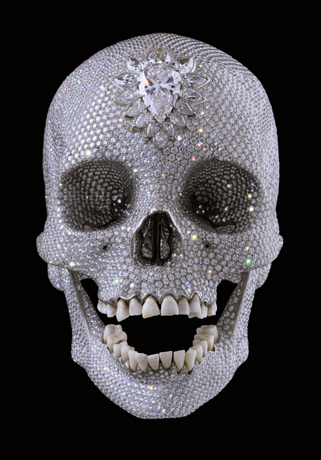Damien Hirst is at it again (and again). The artist’s new exhibition, which occupies not just the generous spaces of the White Cube Gallery in Hoxton, but also three floors of the same, thriving concern’s premises in Mason’s Yard, Piccadilly, is a dizzyingly repetitious display of tried-and-trusted devices – with a single sparkling novelty, like a dazzling decoy, to draw away attention from so much relentless sameness. There are numerous photo-realist canvases, painted in the mutely anonymous manner that marked the paintings in Hirst’s last exhibition at Gagosian in New York. There are rows of dead fish, embalmed in rectangular glass boxes arranged on shelves – neat little mock-taxonomies that go back, in the artist’s oeuvre, at least as far as 1992. There are vitrines, flayed figures and blood-red paintings blown up from medical slides. There are sheep and cows and a bisected tiger shark, all suspended in flotation tanks of formaldehyde. And then there is the piece de resistance, in the shape of a diamond-encrusted platinum skull with a price tag of a cool £50 million.
To avoid too great a sense of anticlimax, this exhibition in two parts is most sensibly negotiated from East to West. The downstairs galleries at White Cube, Hoxton Square, which represent a low point, have been hung with paintings that resemble swatches of fabric but soon disclose the artist’s familiar morbid preoccupations. Collectively entitled the Biopsy Paintings, each is based on a blow-up of a biopsy image of a particular disease – different forms of cancer, for the most part – drawn from the resources of the Science Photo Library. These magnified snapshots of cellular degeneration, bright documents of ways in which people die, are colourful but inert. This is a common side-effect of Hirst’s increasing tendency to make...


